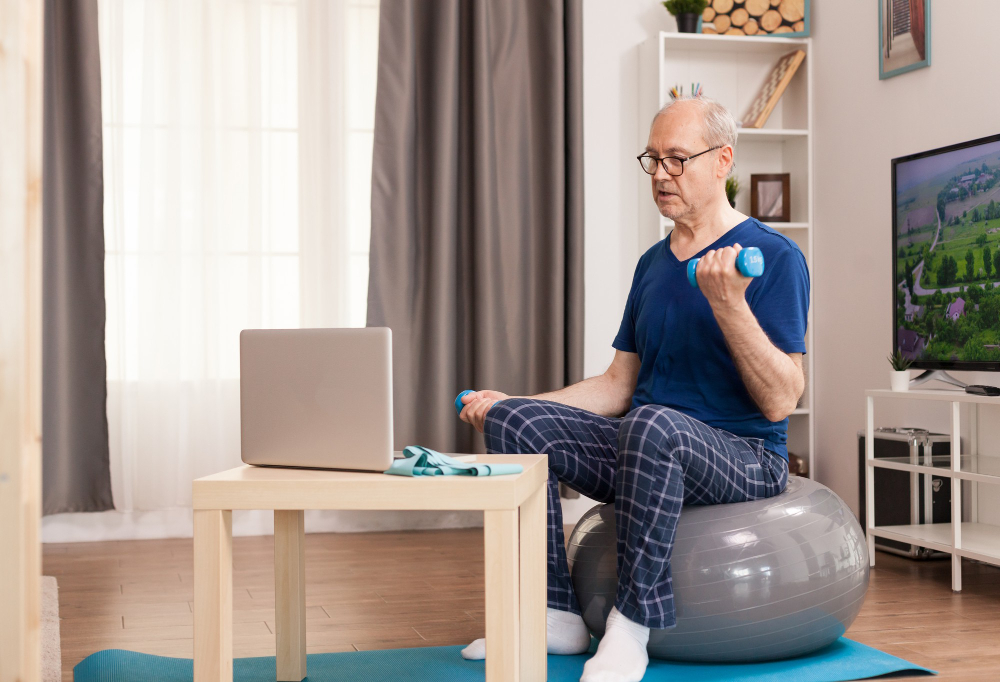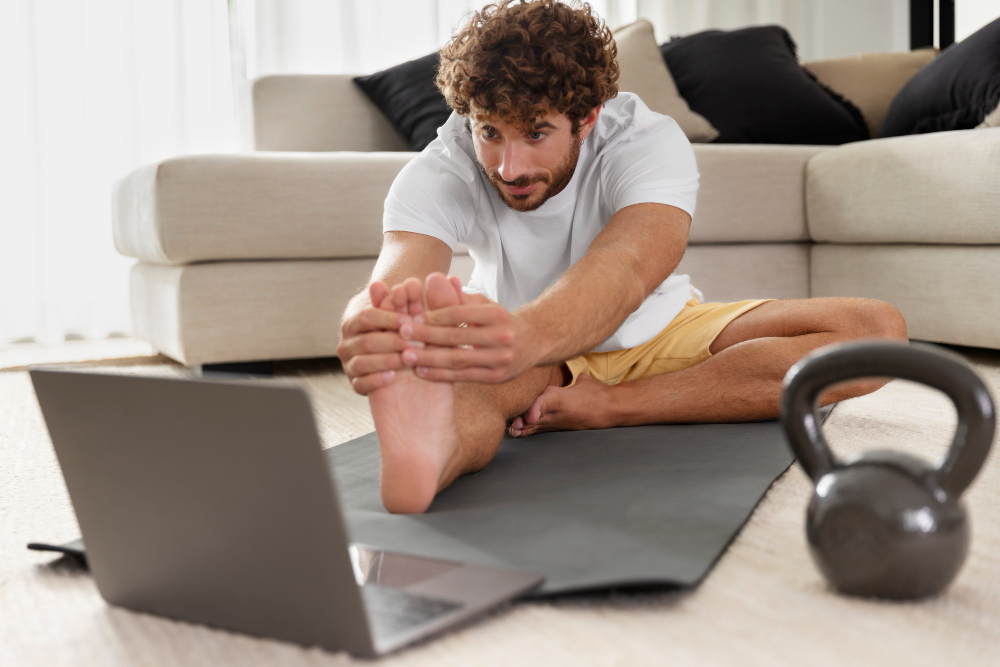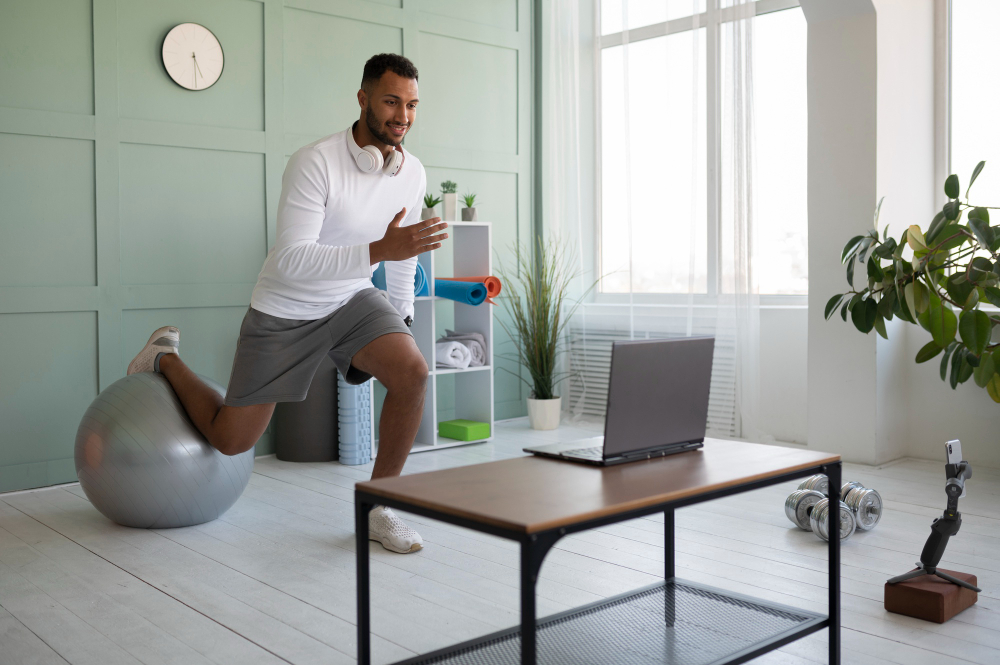Do you want to recover with physiotherapy from the comforts of your home?
Unsure if it is safe and effective?
Physiotherapy exercises at home has been a game-changer in recent years, providing a convenient and customized method of rehabilitation in the convenience of one’s own home. However, at-home physiotherapy’s rise in popularity has raised legitimate questions as well as concerns.
In this post, we’ll go through the advantages, talk about safety issues, and offer insights into this ground-breaking approach to attaining the best possible rehabilitation.
The Rise of Home-Based Physiotherapy
There are several strong reasons why physiotherapy exercises at home has become more and more popular. It provides a customized and customized approach to rehabilitation, which is beneficial for individuals with a range of demands and medical conditions. In the modern world of hectic schedules and limited time, home-based therapy offers a workable answer. Without having to travel, patients can receive professional care, saving them time and effort.
Understanding the Safety Concerns
There are certain safety risks associated with physiotherapy at home, notwithstanding its advantages. A lot of these concerns center on the possibility of improper technique, which can cause harm and impede advancement, and the absence of in-person supervision. It’s critical to distinguish fact from fiction while making decisions concerning home-based physical treatment.
Fact: Professional Guidance is Essential
Unquestionably, when provided under the supervision of a trained practitioner, home-based physiotherapy may be both safe and successful. Skilled physiotherapists have the knowledge and experience to design specialized programs that target each person’s unique demands and difficulties. As the patient advances, they can remotely assess their progress, offer advice, and modify the program as needed. The degree of customization and supervision provided by home-based physical therapy distinguishes it as a beneficial rehabilitation alternative.
Fiction: DIY Physiotherapy Exercises at Home is Always Safe
One common myth that has to be dispelled is the idea that self-guided physical treatment is always secure and successful. There are hazards associated with self-directed exercise, even if some people may see advantages. Without the right direction and oversight, people could execute workouts incorrectly, which could result in injuries and slow down their growth. Do-it-yourself physiotherapy exercises at home can be especially dangerous for people with complicated or serious medical issues.
Ensuring the Safety of Physiotherapy Exercises at Home
Observe these useful guidelines to guarantee the efficacy and safety of at-home physical therapy:

Speak with a Physiotherapist: It’s essential to speak with a licensed physiotherapist before beginning any at-home physical therapy program. They will undertake a comprehensive evaluation of your problem, create a customized treatment plan, and provide advice on how to execute exercises safely.
Concentrate on Correct Form: During workouts, pay close attention to your form. Using the wrong strategy can backfire and result in harm. Adhere to your physiotherapist’s directions to the letter.
Consistent Communication: Continue to communicate with your physiotherapist on a regular basis. Talk about your progress, any worries, and any pain or discomfort you have when performing the exercises. Based on your input, your physiotherapist can modify your program as needed.
Set Achievable Goals: Work with your physiotherapist to create goals that are realistic and doable. You’ll be able to effectively track your progress and maintain motivation if you have realistic objectives.
Remain Up to Date: Make sure you are knowledgeable about your illness and your course of treatment. Your dedication to the program can be strengthened by being aware of the goals and advantages of each workout.
Adapt as Needed: Your physiotherapy regimen may need to be modified as your condition develops or shifts. To keep improving, be willing to change up the exercises or add new ones.
Quick Physiotherapy Exercises at Home
Here are some warming-up exercises to help you get started with your recovery if you’re looking into online physiotherapy. However, keep in mind that these are generic exercises, and for exercises catered to your particular requirements, you must see a physiotherapist:

Neck Stretch: Tilt your head gently back and forth, pausing for ten to fifteen seconds in each position. Try this stretch a few times to release any tension in your neck.
Shoulder Blade Squeeze: Let your arms hang loosely at your sides, whether you’re sitting or standing. Then, while keeping your arms relaxed, gently squeeze your shoulder blades together. Hold for five seconds, then repeat ten times through this workout.
Knee Extension: Take a seat, straighten one leg, and hold it there for a little while before lowering it. Take the other leg and repeat this. This is a good exercise to strengthen your legs.
Ankle Circles: Turn your ankles clockwise and counter-clockwise in a circular motion while sitting or lying down. This workout helps increase ankle range of motion.
Pelvic Tilt: Bend your knees while lying on your back. Your lower back should be lightly pressed against the floor as you contract your abdominal muscles. Take a few seconds to hold this position, then let go. Ten times over, repeat this practice.
A great option for those looking for pain management and rehabilitation is home-based physiotherapy. Even while it can be secure and efficient when done under expert supervision, it’s important to address safety concerns and common misconceptions. To guarantee a successful home-based rehabilitation journey, prioritize appropriate exercise technique, work in tandem with a physiotherapist, and keep lines of communication open.
Remember that your health and safety should always come first, and that the secret to a successful physiotherapy at home experience is to seek professional advice.
Book a free consultation with us and get started on your rehab journey.


